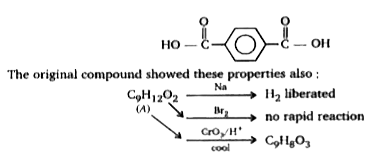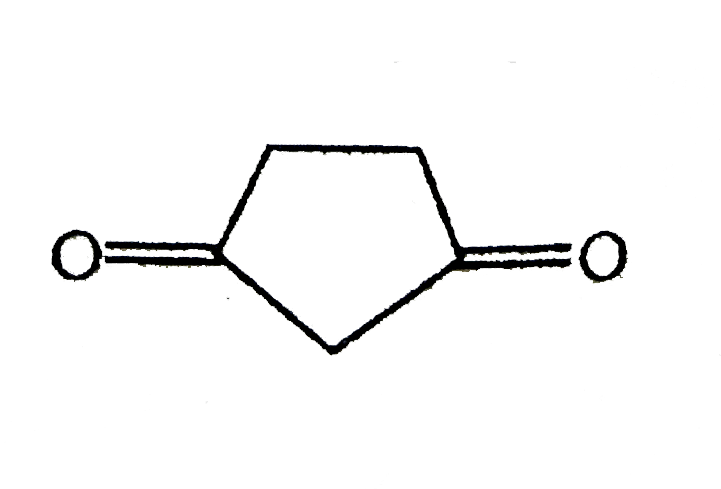When an optically active amine (A) having molecular formula C4H11N is subjected to Hofmann's exhaustive methylation followed by hydrolysis, an alkene (B) is produced which upon oxonolysis and subsequent ydrolysis yields formaldehyde and proanal. The amine 'A' is
CHC∣NH2HCH2CH3
CH3NH−CH∣CH3−CH3
CH3N∣CH3CH2CH3
CH3CH2CH2CH2NH2
To solve the problem step-by-step, we will analyze the information given about the optically active amine (A) with the molecular formula C₄H₁₁N and the reactions it undergoes.
Step 1: Identify the structure of the amine (A)
Given that the amine is optically active and has the molecular formula C₄H₁₁N, we need to determine a structure that has a chiral center. A suitable structure could be:
- Structure of Amine A: CH₃-CH(CH₃)-CH₂-NH₂
This structure has a chiral carbon (the second carbon) which makes it optically active.
Step 2: Perform Hofmann's exhaustive methylation
In Hofmann's exhaustive methylation, the amine (A) is treated with methyl iodide (CH₃I) and a strong base (like NaOH). This process will convert the primary amine into a quaternary ammonium salt.
- Reaction:
CH3−CH(CH3)−CH2−NH2+3CH3I→CH3−CH(CH3)−CH2−N+(CH3)3I−
Step 3: Hydrolysis of the quaternary ammonium salt
Upon hydrolysis, the quaternary ammonium salt will lose a methyl group and form an alkene (B).
- Hydrolysis Reaction:
CH3−CH(CH3)−CH2−N+(CH3)3+AgOH→CH3−CH=CH−CH3+N+(CH3)3OH−
Step 4: Identify the alkene (B)
The alkene formed (B) is:
- Alkene B: CH₃-CH=CH-CH₃ (butene)
Step 5: Ozonolysis of the alkene (B)
The ozonolysis of the alkene will break the double bond and form carbonyl compounds.
- Ozonolysis Reaction:
CH3−CH=CH−CH3+O3→CH2=O+CH3−CH2−C(O)−H
Step 6: Hydrolysis of ozonolysis products
The ozonolysis products are then hydrolyzed to yield formaldehyde and propanol.
- Hydrolysis Reaction:
CH2=O+CH3−CH2−C(O)−H→Formaldehyde+Propanol
Conclusion
The original amine (A) is thus identified as:
- Amine A: 2-Butylamine (CH₃-CH(CH₃)-CH₂-NH₂)
Final Answer
The amine 'A' is 2-Butylamine.
---
Given that the amine is optically active and has the molecular formula C₄H₁₁N, we need to determine a structure that has a chiral center. A suitable structure could be:
In Hofmann's exhaustive methylation, the amine (A) is treated with methyl iodide (CH₃I) and a strong base (like NaOH). This process will convert the primary amine into a quaternary ammonium salt.
CH3−CH(CH3)−CH2−NH2+3CH3I→CH3−CH(CH3)−CH2−N+(CH3)3I−
Upon hydrolysis, the quaternary ammonium salt will lose a methyl group and form an alkene (B).
CH3−CH(CH3)−CH2−N+(CH3)3+AgOH→CH3−CH=CH−CH3+N+(CH3)3OH−
The alkene formed (B) is:
- Alkene B: CH₃-CH=CH-CH₃ (butene)
The ozonolysis of the alkene will break the double bond and form carbonyl compounds.
CH3−CH=CH−CH3+O3→CH2=O+CH3−CH2−C(O)−H
The ozonolysis products are then hydrolyzed to yield formaldehyde and propanol.
CH2=O+CH3−CH2−C(O)−H→Formaldehyde+Propanol
The original amine (A) is thus identified as:
- Amine A: 2-Butylamine (CH₃-CH(CH₃)-CH₂-NH₂)
The amine 'A' is 2-Butylamine.
Topper's Solved these Questions
- AMINES BOOK - NCERT FINGERTPS ENGLISHCHAPTER - AMINES EXERCISE - NCERT Exemplar
24 Videos
- AMINES BOOK - NCERT FINGERTPS ENGLISHCHAPTER - AMINES EXERCISE - NCERT EXEMPLER PROBLEMS
3 Videos
- AMINES BOOK - NCERT FINGERTPS ENGLISHCHAPTER - AMINES EXERCISE - Chemical Reactions
19 Videos
- ALDEHYDES, KETONES AND CARBOXYLIC ACIDSBOOK - NCERT FINGERTPS ENGLISHCHAPTER - ALDEHYDES, KETONES AND CARBOXYLIC ACIDSEXERCISE - Assertion And Reason
15 Videos
- BIOMOLECULESBOOK - NCERT FINGERTPS ENGLISHCHAPTER - BIOMOLECULESEXERCISE - Assertion And Reason
15 Videos
Similar Questions
Knowledge Check
Optically active amine having molecular formula C5H13N on reaction with NaNO2+HCI produces, 3° optically inactive alcohol. Find out structures of amines:
A B
B C
C D
D
An optically active alcohol of formula C9H12O2 produced the following compound when refluxed with KMnO4

What is structure of (A) ?A B
B C
C Dboth (a ) and (b)
Dboth (a ) and (b)
An optically inactive compound (A) having molecular formula C4H11H on treatment with HNO2 gave an alconot (B) which on heating with conc. H2SO4 at 440 k gave an alkene ( C) . ( C) on treatment with HBr gave an optically active compound (D ) having molecular formula C4H9Br Identify (A) ,(B) ,(C) and (D).
View SolutionFind the number of amine isomers which are structural isomers of the molecular formula C4H11N
View SolutionWhen H2 is added to two isomeric alkenes A and B having molecular formula C5H9Cl, A gives optically inactive compound while B gives a chiral compound. The two isomers are
View SolutionA certain compound 'A' has a molecular formula C5H11Br. It reacts with Mg metal in anhydrous ether to form compound B which upon hydrolysis gives n-pentane when compound A was reacted with na metal in dry ether gave 4,5- dimethyl octane. What is A B and draw their structures?
View SolutionAn optically active compound A (assume dextrorotatory) has the molecular formula C7H11Br. A reacts with hydrogen bromide, in the absence of peroxides to yield isomeric products, B and C, with the molecular formula C7H12Br2. Compound B is optically active, C is not. Treating B with 1 mol of potassium butoxide yields (+)−A. Treating C with 1 mol of potassium tert-butoxide yields (±)−A. Treating A with potassium tert-butoxide yields D(C7H10). Subjecting 1 mol of D to ozonolysis followed by treatement with zinc and acetic acid yields 2 moles of formaldehyde and 1 mole of 1,3-cyclopentanedione.

The optically active compound 'A' is
View SolutionAn optically active compound A (assume dextrorotatory) has the molecular formula C7H11Br. A reacts with hydrogen bromide, in the absence of peroxides to yield isomeric products, B and C, with the molecular formula C7H12Br2. Compound B is optically active, C is not. Treating B with 1 mol of potassium butoxide yields (+)−A. Treating C with 1 mol of potassium tert-butoxide yields (±)−A. Treating A with potassium tert-butoxide yields D(C7H10). Subjecting 1 mol of D to ozonolysis followed by treatement with zinc and acetic acid yields 2 moles of formaldehyde and 1 mole of 1,3-cyclopentanedione.

The compound 'B' is:
View Solution
